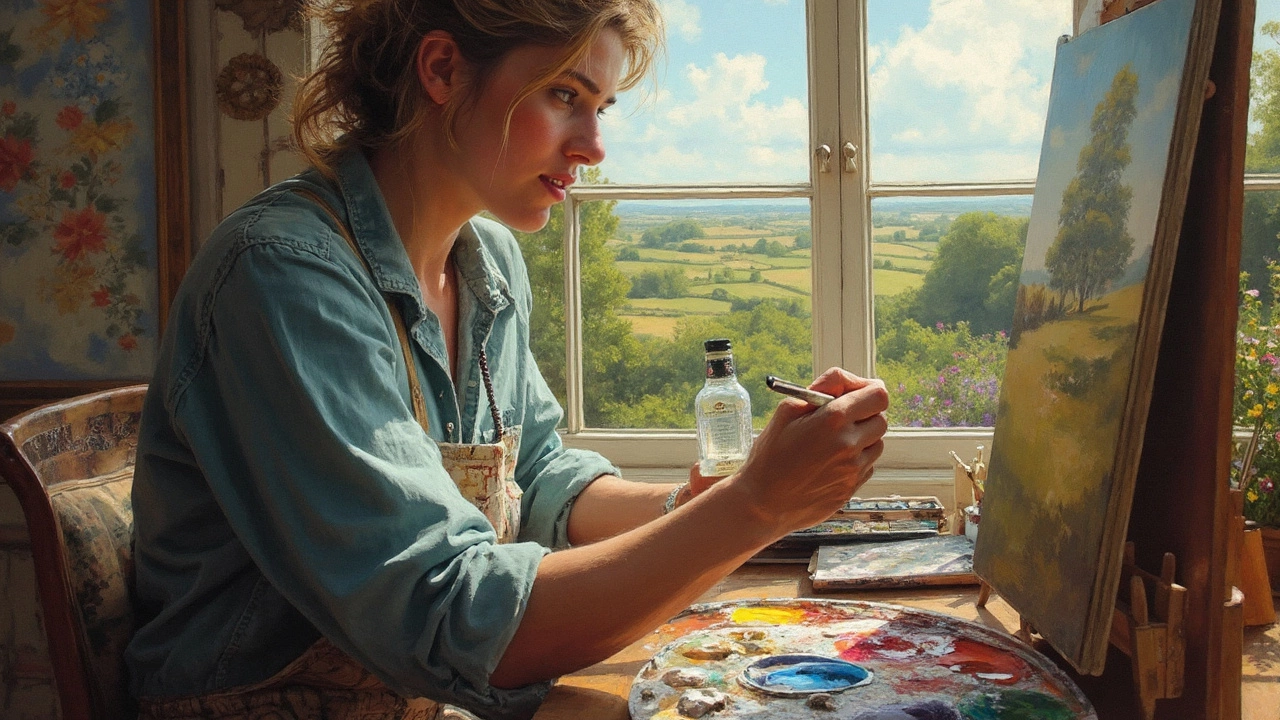Golden Rule in Art: Why It Matters and How to Use It
Ever wonder why some pictures just feel right? Most of the time it’s the golden rule at work – a simple guideline that helps artists balance, focus, and connect with viewers. Think of it as the “don’t overdo it” switch for composition, colour, and storytelling. When you follow it, your work gains clarity without sacrificing creativity.
Balancing Elements with the Golden Ratio
The classic golden ratio (1.618) shows up in nature, architecture, and famous paintings. You don’t need a ruler to use it; just place the main subject slightly off‑center, around the 1/3‑2/3 line. Portraits, like those discussed in our "Eyes in Portraits" post, become more engaging when the eyes land near this sweet spot. The same trick works for landscape scenes – put a tree or horizon line at the ratio point and watch the composition click.
Colour Harmony and the Golden Rule
Colour choices follow a similar logic. Pick a dominant hue, then add a complementary shade that sits opposite on the colour wheel. This creates contrast without chaos, a tip echoed in the "Best Colours for Landscape Painting" guide. If you’re working in oil or acrylic, let the golden rule steer your palette: one bold colour, two muted tones, and a neutral background keep the eye from bouncing around.
When you sketch a sculpture, the rule applies to proportions too. The "Easiest Sculptures for Beginners" article suggests measuring the height of a figure against its base using the 1.618 ratio. This quick check prevents awkward limbs and gives the piece a natural flow. Even cheap materials, like the ones in "Cheapest Materials for Sculpture", can look polished when sized correctly.
Storytelling benefits from the golden rule as well. In portrait commissions (see "Do Portrait Painters Still Exist?"), a subtle background element placed at the golden point can hint at the subject’s personality without stealing focus. It’s a tiny detail that adds depth and keeps the viewer’s eye moving.
Digital creators aren’t left out. Converting hand‑drawn sketches to digital art (covered in "Turn Traditional Drawings into Digital Art") is smoother when you align layers and UI elements using the same ratio. Your final piece feels organized, and clients notice the professionalism.
Applying the golden rule doesn’t mean you abandon experimentation. Use it as a starting block, then tweak. If a composition feels off, shift the focal point a few centimeters and re‑evaluate. Small moves often produce big results, especially in fast‑paced mediums like watercolour (see "What to Paint First in Watercolor").
Bottom line: the golden rule is a practical shortcut, not a strict law. It helps you create balanced, compelling art whether you’re painting, sculpting, or designing digitally. Keep this guide handy, test it on your next project, and you’ll see a noticeable lift in how your audience responds.

26 Feb 2025
Oil painting is an art form with specific techniques blending creativity with skill. The golden rule emphasizes 'fat over lean,' ensuring layers dry properly. Understanding and applying this principle prevents cracks and enhances durability. This article explores essential oil painting techniques, offering practical tips for artists.
Continue reading...
